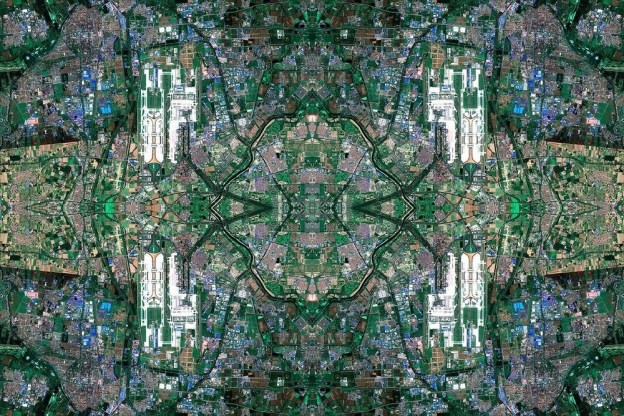
The carefully overlaid images of our world on Google Maps is an impressive sight even on the dullest computer screen, but one artist has taken Google’s documentation of Earth one step further … and the results are breathtaking. Dublin-based artist David Thomas Smith’s Anthropocene series is currently on display at the Copper House Gallery in Dublin and features notable locations reconfigured as striking Persian rug-like patterns woven together with images from Google Maps.
The results are astoundingly intricate and beautiful. Smith’s series features reconfigured images of Three-Mile Island, Las Vegas, Silicon Valley, and Beijing National Airport, as well as other notable locations. Each “rug” is made up of thousands of screen grabs of Google Maps and then reconstructed piece-by-piece with Photoshop. According to the gallery’s description of the project, “Anthropocene itself reflects upon the complex structures that make up the centres of global capitalism, transforming the aerial landscapes of sites associated with industries such as oil, precious metals, consumer culture information and excess. Thousands of seemingly insignificant coded pieces of information are sown together like knots in a rug to reveal a grander spectacle.”

Persian rugs date all the way back to 500 B.C. and are an important form of art and culture throughout the history of the Middle East, which makes it especially cool to see this centuries-old tradition combined with modern technology. In fact, we recently saw another artist who used computer parts to create rug-like sculptures, resulting in a colorful array of a PC’s internal organs. With Smith creating rugs with Google Maps, perhaps there’s a new trend of tech-influenced floor coverings on the way?
[Images via Copper House Gallery]


